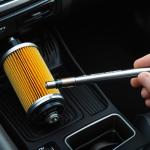Understanding the UK MOT Emissions Test
Navigating the UK MOT emissions test can be a daunting task for many vehicle owners, but understanding the requirements and processes can ease this burden significantly. The MOT emissions test primarily assesses a vehicle’s exhaust emissions to ensure compliance with environmental and safety standards set by the government. Compliance is not just a legal obligation but also a key factor in ensuring a vehicle’s safety and performance on the road.
The test checks for compliance with emission limits, and vehicles that fail to meet these may be deemed unfit for the road. It covers a variety of vehicles, with particular attention to those most commonly impacted by emissions regulations, such as petrol and diesel-powered cars.
Topic to read : The Ultimate Guide to Selecting Eco-Friendly Car Wash Products Perfect for UK Weather
An important aspect of preparing for the MOT emissions test involves proper vehicle preparation. This entails making sure that the vehicle is in optimal condition and meets all necessary requirements. Paying attention to vehicle preparation can prevent unforeseen failures during the test, ensuring a smoother and more successful testing process.
By understanding the intricacies of the MOT emissions test and ensuring your vehicle adheres to the guidelines, you can maintain compliance, uphold vehicle performance, and contribute to a cleaner environment.
Also to read : Your Essential Guide to Selecting the Perfect Cargo Van for Your UK Business Requirements
Pre-Test Vehicle Checks
When preparing for the MOT emissions test, it’s crucial to perform thorough vehicle maintenance. Specifically, focus on the emissions system, as it plays a pivotal role in determining test outcomes. Begin by inspecting key components such as the catalytic converter and exhaust system for any signs of damage or wear, since efficiency in these areas directly affects emissions levels.
An often-overlooked area is the Diesel Particulate Filter (DPF) in diesel vehicles. It’s essential to ensure this filter, designed to capture and store exhaust soot, is clean and functioning correctly. Regular checks and professional cleaning can prevent clogging, a common cause for test failures.
Creating a pre-test checklist can greatly enhance your preparation efficiency. Include checks like verifying the fuel cap’s seal, inspecting spark plugs, and ensuring no warning lights are active on the dashboard. This proactive approach not only increases the likelihood of passing but also contributes to your vehicle’s long-term health and compliance.
Common Pitfalls to Avoid
Navigating the MOT emissions test requires careful attention to detail, particularly to prevent potential emissions failures that could delay compliance. Many vehicle owners encounter issues primarily due to neglecting routine maintenance or overlooking critical vehicle systems.
One frequent reason for test failures is a malfunctioning catalytic converter. This crucial component reduces harmful emissions by converting them into less toxic pollutants. Ensuring it’s in good working order is vital. Another common pitfall involves the oxygen sensors. A faulty sensor can lead to inaccurate air-fuel mixture readings, affecting emissions levels. To avoid these issues, perform preemptive checks and routine replacements as needed.
Routine vehicle maintenance is indispensable for seamless test preparation. Regularly checking the air filter for clogs and ensuring proper fuel system operation can mitigate unforeseen problems. Moreover, make it a habit to run diagnostics checks. These tests identify hidden issues that might not trigger dashboard warning lights but could still lead to failures.
In summary, adhering to consistent maintenance schedules and addressing potential failures early can significantly smooth the path through the MOT emissions test. By being proactive, vehicle owners not only avoid common pitfalls but also ensure that their vehicle remains both roadworthy and environmentally compliant.
Expert Tips for Optimal Preparation
Preparation for the MOT emissions test can be daunting, but following expert advice can significantly increase your chances of success. Automotive professionals stress the importance of focusing on vehicle performance to enhance emissions outcomes. Maintaining optimal vehicle performance involves checking and replacing parts such as the spark plugs and air filters, which can affect the emissions control system.
Regular diagnostic tests are another crucial element in ensuring test readiness. These tests can identify malfunctioning components like oxygen sensors or issues within the exhaust system, which are often responsible for emissions failures. Addressing these problems promptly can prevent last-minute setbacks.
Updating vehicle software is also a key factor that experts recommend. Modern vehicles rely heavily on software for maintaining efficient emissions levels. Ensuring your vehicle’s software is current can optimize the emissions system, leading to better test results. Moreover, investing in professional-grade diagnostic equipment for at-home checks can further enhance your preparedness, providing peace of mind before the test.
Latest Regulations and Updates
Staying informed about the latest MOT regulations is crucial for vehicle owners to ensure compliance and avoid unexpected test failures. In recent years, several updates have been made to the emissions legislation to align with environmental standards and reduce vehicular pollution. These changes often include tighter emission limits and new testing procedures, particularly for diesel vehicles which are subject to more stringent checks due to their higher pollution levels.
Understanding these compliance updates is not just about meeting legal requirements; it’s also about contributing positively to the environment and ensuring your vehicle’s optimal performance. For instance, newer regulations may require vehicles to pass tests for specific pollutants like nitrogen oxides (NOx), in addition to carbon monoxide (CO) and hydrocarbons (HCs). As such, keeping abreast of these changes can help vehicle owners anticipate necessary adjustments or repairs.
To assist with this, resources are available through governmental websites or local automotive centers that provide detailed insights into these emissions testing regulations. Periodically checking these resources can keep you updated on changes that might affect your vehicle, allowing you to prepare in advance and uphold your vehicle’s compliance effectively.
Visual Aids and Checklists
When preparing for the MOT emissions test, leveraging visual guides and preparation checklists can be immensely beneficial. These tools simplify the process, ensuring that no critical component goes unchecked. Visual aids, like diagrams of the emissions system, provide clear insight into complex areas such as the catalytic converter and Diesel Particulate Filter (DPF), making inspection more manageable even for less experienced car owners.
Sample checklists can further streamline pre-test preparations. A well-organized checklist might include tasks such as verifying the condition of the exhaust system, checking for dashboard warning lights, and ensuring all necessary repairs are completed. This structured approach not only boosts efficiency but also minimizes the risk of overlooking key elements that could lead to emissions failures.
Moreover, accessing online resource tools is a smart way to stay informed and prepared. With interactive platforms offering up-to-date information on MOT regulations and tailored checklists, vehicle owners can effortlessly prepare for the test. These resources serve as a valuable asset in maintaining compliance and ensuring a smooth pathway through the testing process.









